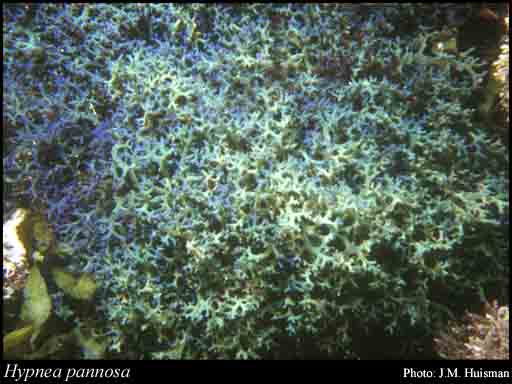- Reference
- Öfvers.Kongl.Vetensk.-Akad.Förh. 4:14 (1847)
- Conservation Code
- Not threatened
- Naturalised Status
- Native to Western Australia
- Name Status
- Current

Scientific Description
Habit and structure. Plants forming dense, crisp mats, pale blue in situ but drying a reddish brown, to 5 cm in height but capable of spreading laterally for some distance. Axes firm, terete or slightly compressed, irregularly branched, the lateral branches divaricate and tapering abruptly at the apices. Secondary anastomoses between branches often present. Short, spinelike branches common, these basally as broad as the bearing branch, with no constrictions.
Reproduction. Tetrasporangial nemathecia on mid and lower parts of fertile branchlets, initially abaxial and saddle-shaped, but sometimes encircling the branch. Tetrasporangia zonately divided, 25–40 x 10–20 µm. Other reproductive structures not observed.
Distribution. Widespread in tropical and warm seas. In Australia known from Rottnest I., W. Aust., around northern Australia to Qld.
Habitat. Generally epilithic in the intertidal or shallow subtidal.
Distribution
- IBRA Regions
- Carnarvon, Dampierland, Pilbara.
- IBRA Subregions
- Cape Range, Pindanland, Roebourne.
- IMCRA Regions
- Canning, Kimberley, Ningaloo, Pilbara (offshore), Shark Bay.
- Local Government Areas (LGAs)
- Ashburton, Broome, Carnarvon, Derby-West Kimberley, Karratha, Port Hedland, Shark Bay, Wyndham-East Kimberley.